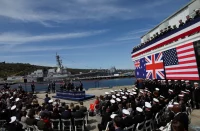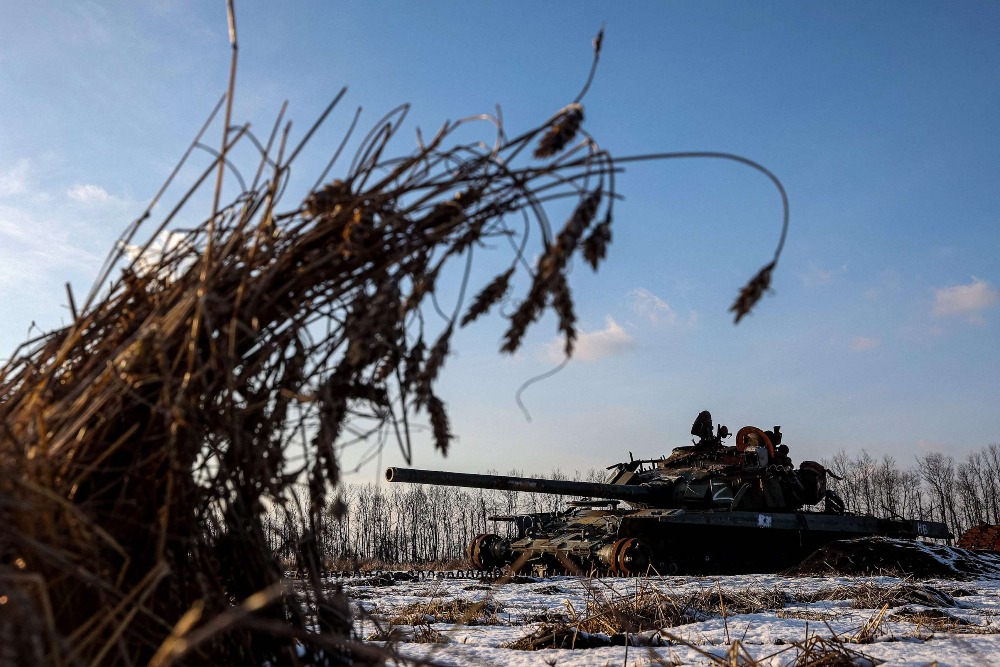
In recent years, there has been a steady trend towards a gradual decline in the political, financial and economic opportunities of the West. In fact, its military-technological advantage in the modern world has also been lost. The system of world governance created by the United States and other leading Western countries, through dollarization and control of financial institutions and other international organizations, no longer meets the challenges of modern world development and needs to be reformatted. Due to economic and social problems, the West is losing its appeal as a role model. There is no longer a beautiful picture of “universal welfare”. This is manifested in the permanent internal political crisis that has engulfed most of the leading Western countries, and in the loss of influence of the G7 states over the rest of the world, which we now call the world of the global majority. It is these developing countries that are trying to live by their own interests, stoping blindly following in the flow of Western policies and beginning consolidating around other new world institutions such as BRICS and SCO. The real problem of the West is how many countries of the “global South” view its leader, the United States, due to Washington’s policy of interventionism and a penchant for selective respect for international law. U.S. and European support for Israel in its war in Gaza has only reinforced this perception. Now the West is trying in all possible ways, including armed ones, to stop this process, but objectively it is doomed to fail. At the same time, these attempts will continue to at least slow down this process, since the issue of the West’s further well-being is on the agenda. Indeed, its control over global cash flows is the most important vector of its existence.
Washington believes that the most effective way to achieve its goals is a policy based on the principle of “divide and rule”, which they have been using since the middle of the twentieth century and which is the cornerstone of the common approach of the Anglo-Saxon world to building relations with other countries. One can view as an example the provocation of an armed conflict between Ukraine and Russia, for which the Americans began to prepare as early as at the start of the XXI century. Washington has always been afraid of Russia’s political and economic rapprochement with Europe, and the slogan of the nineties “Re-unified Europe from Lisbon to Vladivostok” was totally unacceptable to it. Washington has always regarded it as the threat of a serious geopolitical competitor in Eurasia. Moreover, the most terrifying was a mere unification of Russia and Europe. Therefore, everything was done, including the blowing up of the two Nord Stream gas pipelines, the adoption by the EU of numerous packages of anti-Russian sanctions, in order to significantly weaken European-Russian relations. The outcome is: Moscow has lost its traditional sales markets and had to reorient its trade flows from the West to the East and South, and Europe is now facing a severe economic crisis. According to Vice-President of the European Commission Maros Sefcovic, the energy crisis in Europe has cost the EU one trillion euros over the past two years.
Washington is also trying to actively act against the largest and most influential countries of Eurasia – Russia, China and India, trying to sow conflict between them, for example, by fomenting a border dispute between Beijing and Delhi. Only in April of this year, U.S. Secretary of State Blinken, U.S. Secretary of the Treasury Yellen and German Chancellor Olaf Scholz visited China, unsuccessfully trying to convince the Chinese leadership to limit its economic ties with Moscow. In this regard, an analytical article by Alexander Gabuev in the April issue of the American magazine Foreign Affairs, “Putin and Xi’s Unholy Alliance” is of particular interest, in which the author tries to figure out why the West won’t be able to drive a wedge between Russia and China.
Just a decade ago, most U.S. and European officials were skeptical about the strength of the nascent strategic partnership between Beijing and Moscow. Western capitals mistakenly believed that the Russian-Chinese rapprochement was doomed to failure because there was distrust between the two neighbors due to a number of historical disputes and cultural distance between the two societies. Moreover, Washington was confident that China would always value its ties with the United States and its allies more than symbolic relations with Russia, while Moscow would fear Beijing’s strengthening and seek a counterweight in the West.
Even in his assessments of Xi Jinping’s visit to Moscow in March 2023, Secretary od State Blinken argued in Congress that this was “their marriage of convenience.” This skepticism of an official of such high rank did not take into account an important and disturbing reality for the West: China and Russia are now more closely linked than at any time since the 1950s.
Over the past two years, their bilateral trade turnover has grown from $190 billion to $240 billion in 2023 (Russian exports amounted to $129 billion and imports to $111 billion). The curtailment of Russian trade with the West under the influence of imposed sanctions contributed to the intensification of imports of Chinese industrial equipment, sales of which jumped by 54 percent in 2023 compared with the previous year, and sales of Chinese cars in Russia increased fourfold. These figures mean Chinese-made goods, including growing exports of chips, optics, UAVs and sophisticated manufacturing tools.
After the start of the Special Military Operation in February 2022, the delegation exchange between the top leaders of the two countries has significantly increased. After Xi Jinping’s March visit to Moscow, Russia’s Prime Minister Mikhail Mishustin visited China twice, in addition to President Putin’s personal trip to Beijing in October 2023. It is expected that after the inauguration ceremony, the Russian president will pay a visit to China, and the Chinese leader will attend the BRICS summit in Kazan in October 2024.
China and Russia have become much closer in the field of military cooperation. Despite Moscow holding its Special Military Operation, the People’s Liberation Army of China (PLA) has increased the number of joint military exercises. In September 2022, Russia conducted strategic exercises in its Far East, with participation of PLA units. In December 2022, the navies of the two countries held their annual military exercises in the East China Sea, and in 2023, three rounds of joint naval exercises took place. At the same time, the Air Forces of both countries carried out four joint patrols in the Asia-Pacific region using strategic bombers. Through these activities, both sides deepen and hone their interoperability.
In his Foreign Affairs article, the author concludes that although Russia and China are not in a military alliance, the two major nuclear powers, which are on friendly terms and standing “back to back” (the Chinese figurative definition of bilateral relations) on the giant continent of Eurasia, are a serious headache for Washington. The United States will need to develop its strategic nuclear forces in order to try to contain two rival partners with huge nuclear arsenals far exceeding the American nuclear potential.
Moscow and Beijing may not agree to create a military alliance between them, but the further expansion of bilateral relations in all spheres will have an increasing impact on the balance of power in the world and will become a challenge to the West.
According to the author, in order to come to terms with such a development of events, Western politicians should abandon the idea that they can drive a wedge between Beijing and Moscow. Any hope of tearing them apart is nothing more than wishful thinking. Of course, Sino-Russian relations are not without tension, but at the moment both countries are demonstrating a remarkable ability to settle their differences.
In these circumstances, Western leaders need to develop a long-term strategy for maintaining peace, taking into account all the consequences of simultaneous competition with Russia and China. First of all, the West will need to find a balance between deterrence and reassurance in relations with Moscow and Beijing in order to avoid a dangerous escalation that may arise from misconceptions and misunderstandings. Western governments must take into account all the second-order consequences of coercive trade and economic measures against Russia and China and how retaliatory countermeasures can further destroy the very fabric of globalization. They should strive to make international institutions such as the UN and related agencies work again, even with the participation of Moscow and Beijing.
At the end pf the article, the author makes a conclusion that in order to protect European and Asian security, curb the processes of climate change, manage new breakthrough technologies such as artificial intelligence, and solve the problems facing the global financial architecture, Western politicians must take into account the reality of an increasingly cohesive Russian-Chinese axis.














Comments